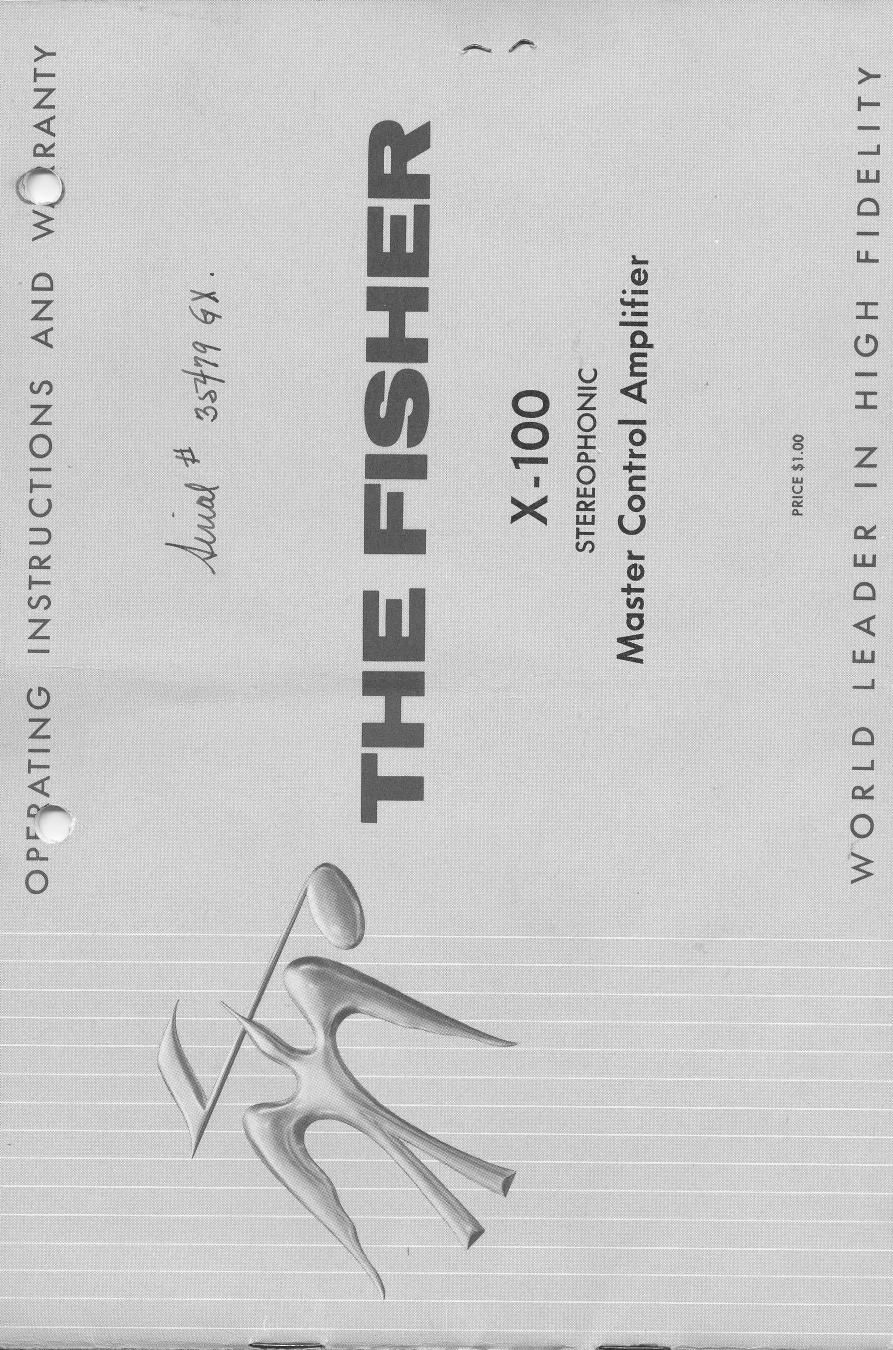Fisher X 100 Owners Manual
This is the 19 pages manual for Fisher X 100 Owners Manual.
Read or download the pdf for free. If you want to contribute, please upload pdfs to audioservicemanuals.wetransfer.com.
Page: 1 / 19
